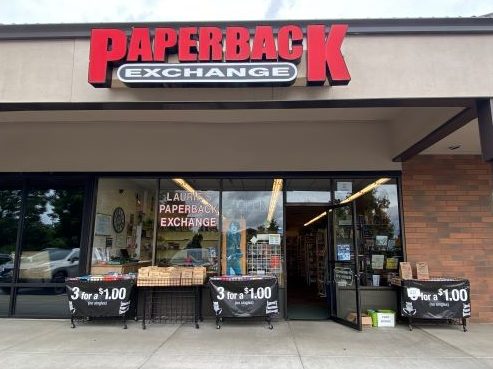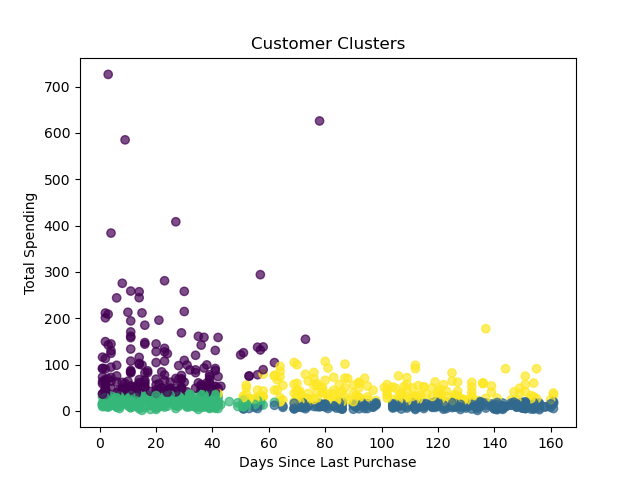In August 2022, my wife and I relocated to Oregon to purchase a local bookstore. What better way to understand local economic development than directly struggling with it?

The store had been in the community for 40 years as Laurie’s Paperback Exchange. Its business model was essentially exchanging inexpensive paperbacks. As you can imagine, there is no profit in that, so the store had been losing money for years. They would sell an $8 list-price book for $4, but customers could return those or other books and get $1 store credit. They could use half of their store credit on any store purchase. So they would only pay $2 for the book, leaving $1 of gross revenue per book sold.
The bulk of the inventory was mystery, romance, and western novels. Few books were priced over $4, and the owner had set aside some more expensive books for online sales.
The store is located in Oregon City, which has a population of around 20K. Even so, it is within Portland’s urban growth boundary and so has to pay the Portland minimum wage, which is $15.45 as of this writing. Clearly, no business can survive paying that much from $1 in-person physical transactions.

The previous owner had no record of outstanding store credit. They tracked daily store credit redeemed on their end-of-day receipt, and it was often around 50% of the total revenue.
As new owners, we decided to phase out the old store credit over the first year. Many customers understood the need to be profitable to stay open and said we should have canceled it all immediately. We announced the policy as soon as it was decided and then had a full-store credit sale the last week of our first year. In a week, we redeemed around $30K worth of store credit at that sale.
The employees that stayed with the store were long-term, up to 10 years or longer. They had their way of doing things. My wife had been managing bookstores for Half Price Books for almost 20 years and had successfully turned around multiple stores, including bringing one up to the top store in the chain.
When the employees said things had to be done a certain way, we listened and tried it. We also noticed that one employee only liked to shelve books and was rude to customers, while another only liked to chat with customers. Another was caught doing work from another job instead of store work. We realized the employees, on the whole, were costing us more money than they made. For 2023, we laid them all off. My wife was able to eke out a small profit going forward.
A few months before the end of our first year in 2023, the landlord gave us a handwritten slip with a rent increase. Thinking about the future, we wanted to bring the store to its full potential and sell it someday in maybe 3-5 years as a fixer-upper. We asked the landlord for a five year lease with an option to renew. He balked at that and said we might transfer the lease to a liquor store.
The negotiations broke down, and his final offer was to raise the rent by 25% for the next year, despite numerous vacancies and more businesses leaving than coming. We were in a small space and felt constrained and isolated. Paying 25% more would have eliminated its remaining profit, so we decided to move instead.
We moved to the other main shopping center down the street. It was in a space where a mattress store had closed. The infrastructure was decent but needed remodeling. We got an SBA loan, and with the profit we had for the year, we moved. It had twice as much space as before and had much more visibility and traffic.

Regarding visibility, we never had a customer tell us they saw us across the street at Safeway at the old location and decided to come over. A couple of customers said they’d been going to the pizza place two doors over for years and never knew there was a bookstore. Other people told us they thought we were a thrift store or a senior center because they only ever saw seniors go in.
At our new location, we’re between three restaurants, a game store, a Bi-Mart (a smaller, more rural version of Wal-Mart), and other smaller shops. We got a lot of customers who didn’t know about us but saw us while walking by. We dropped the paperback exchange part of the name, so now it’s obvious what Laurie’s Books is.
I contacted about a dozen contracting companies and none were willing to even give an estimate when I said we wanted about 100 bookcases for a $20K budget. The flooring companies wanted more than the material cost of the new carpet to remove and replace the old. I realized I would have to do all of the work myself.
Completing the bookcases took about six months, with some help from friends, family, and volunteers. We reopened in phases. We were only closed for one month as I painted the walls, replaced the carpet, and built fixtures while my wife began an inventory system, shelved books, and worked with customers and new employees. We’ve been moving boxes as we slowly unpack and make room for the fixtures. As of this writing, we have the last corner of the store to clear out the office and breakroom furniture and replace it with the last two shelves.

What prompted this post now is that since the fixtures are nearly complete and the backrooms will be completed soon, I realized it would make more sense for me to find a different full-time job, at least until we sell the store in 3-5 years. That will give us enough time to finish building the store to profitability.
I completed a customer segmentation analysis on the store transaction data to update my data science portfolio. The data, process, and results are posted here on GitHub but I wanted to share the five months of data so far.

Basically, we have four main groups across more or less spending and more or less time passed since their last purchase. Unfortunately, we only have five months of data instead of forty years. Hopefully, These clusters will become clearer once we have at least a year of data in a fully built-out state.
To round out the economic development angle, the wages are too high for the area. Many people are asking to work here and have even had offers to work for less than minimum wage off the books. Apparently, this has been ongoing, and another person familiar with economic development in the area said this is fairly common.
We also realized that community engagement can make a local business profitable. Otherwise, it would compete with Amazon and discount retailers and race to the bottom. We’ve recently filled our events schedule.

In summary, building this bookstore is a long-term labor of love. Thus far, we haven’t taken any profit from it but instead have invested in filling inventory and building out the new location. One person couldn’t have done it alone without more resources than any reasonable person would spend on a local business. We still anticipate profitability in the next year or two but wonder how local businesses without our particular skillsets would manage. Most would probably close.

Leave a Reply